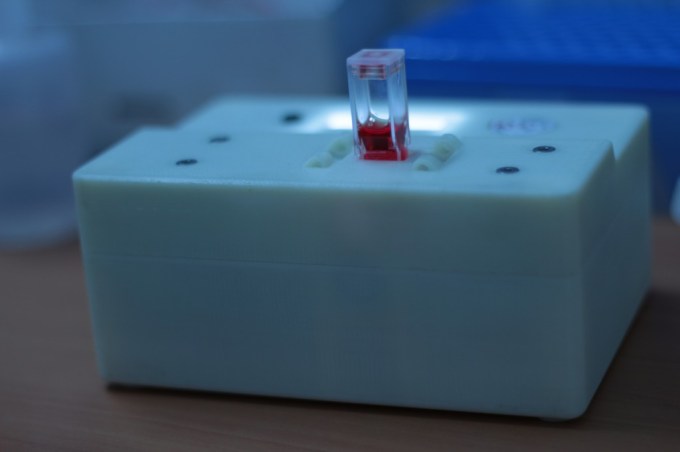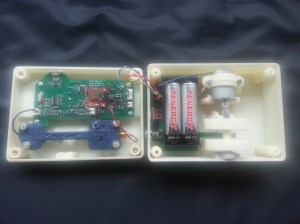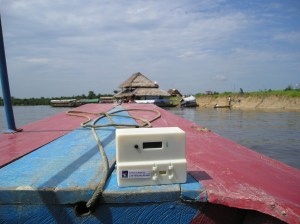Malaria, a disease rarely found in the US, is a global epidemic, with 219 million cases reported by the CDC in 2010. Caused by a parasite and spread from person to person via mosquito, the disease easily go undetected in its early stages with symptoms that mirror those of the flu. Early detection of Malaria is critical to treatment but is done too infrequently or too late, usually due to costs.
Today, the Disease Diagnostic Group (DDG) is presenting their Rapid Assessment of Malaria (RAM) device at Disrupt Europe 2014. RAM was developed through research at Case Western Reserve University by malaria researcher Brian Grimberg and Founder John Lewandowski, at the time an engineering and management student. Lewandowski has since continued his work through a PhD in mechanical engineering at MIT.
RAM is unique in that it is a purely mechanical device, using a proprietary magneto-optical detection method.
The device focuses on Hemozoin, a byproduct Malaria parasites leave in their wake as they consume red blood cells. Hemozoin is an iron-containing pigment and because of its magnetic quality, can be used as a biomarker for the disease.

If a person is infected, the RAM first uses magnets to align the Hemozoin present in blood, creating clear patterns of the pigment visible in the sample. Next, a laser is shined through the sample. By measuring the percent of light that passes through the sample, the RAM outputs a number, which corresponds to the degree to which an individual is infected. This quantitated information enables practitioners to not only diagnosis a patient but also proceed with appropriate treatment depending on the severity of the infection.


Not surprisingly, this isn’t the first attempt at diagnosing malaria. Current techniques rely on chemical reagents and a skilled individual to assess blood stains under a microscope. Many rural environments lack the these tools, meaning patients must travel long distances to be diagnosed. When tools are available, trained technicians are needed to deliver an accurate reading. To top it off, reagents are only good for a limited time increasing costs as materials degrade and must be replace. Also unlike today’s diagnostics, which simply indicate whether a person is likely to have malaria, RAM outputs a score that indicates the severity of the condition. Due to its mechanical design, quantitative output and ease of use, RAM appears to offer solutions to the existing challenges.
Thus far the team has piloted the device in Peru with a grant from the US Navy, Papua New Guinea funded by Case Western Reserve University and India with Bosch, a healthcare group. Several hundred tests in each location were completed and the RAM achieved results of 97 percent, 93 percent and 94 percent accuracy, respectively, when compared to industry standard.
It’s critical for devices like this, where your users are primary rural health clinics, to be long lasting and affordable. The RAM device is designed to last for approximately 100,000 field tests, which DDG says results in a cost per test of ~$.025, an estimated savings of nearly $100,000 over the product lifetime compared with even the cheapest methods available today.
DDG says it aims to distribute the device where is can be most useful in the healthcare chain, directly into the hands of providers on the ground in Africa, India and parts of South America. Distribution and adoption are hurdles for any healthcare device and are not issues that can be brushed aside. That’s why DDG is setting up local distribution partnerships in those regions, starting today with Bosch Healthcare in India.
If they achieve scale, RAM could have big implications. Healthcare providers may now be able to diagnose patients before symptoms become apparent saving healthcare costs and lives.
Looking beyond the RAM, the company has its eyes on other diseases that could use similar magneto-based diagnosis methods. Shistosomiasis and Chagas (intestinal diseases caused by parasitic worms), which affect nearly 350 million in the developing world every year, are next on the list. DDG also plans to roll out a patient database system and disease tracking to complement their hardware device.
Starting today, you can pre-order the final RAM device, designed in collaboration with IDEO, to be distributed in mid-2015.
[gallery ids="1073067,1073066,1073065,1073064,1073063,1073062"]